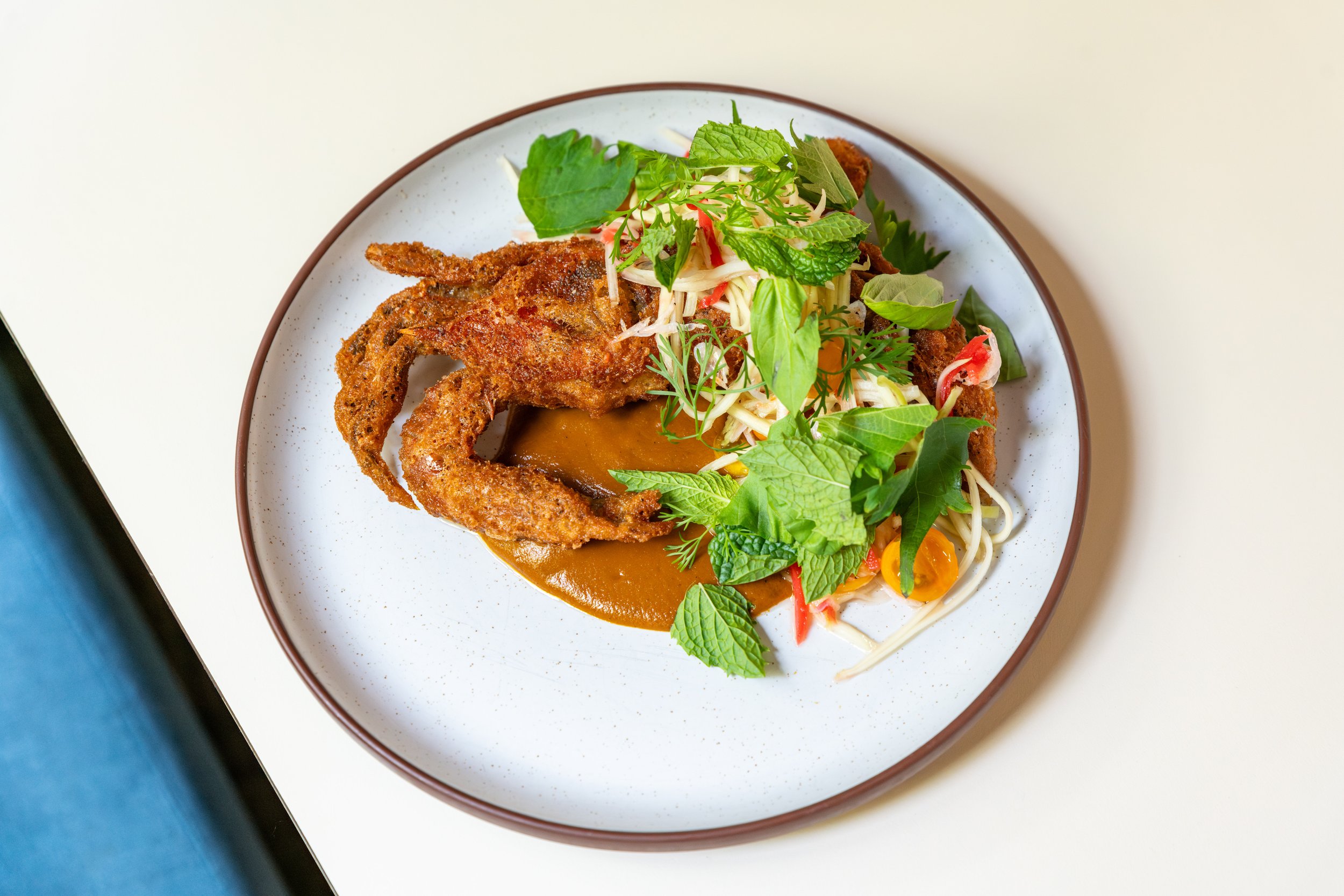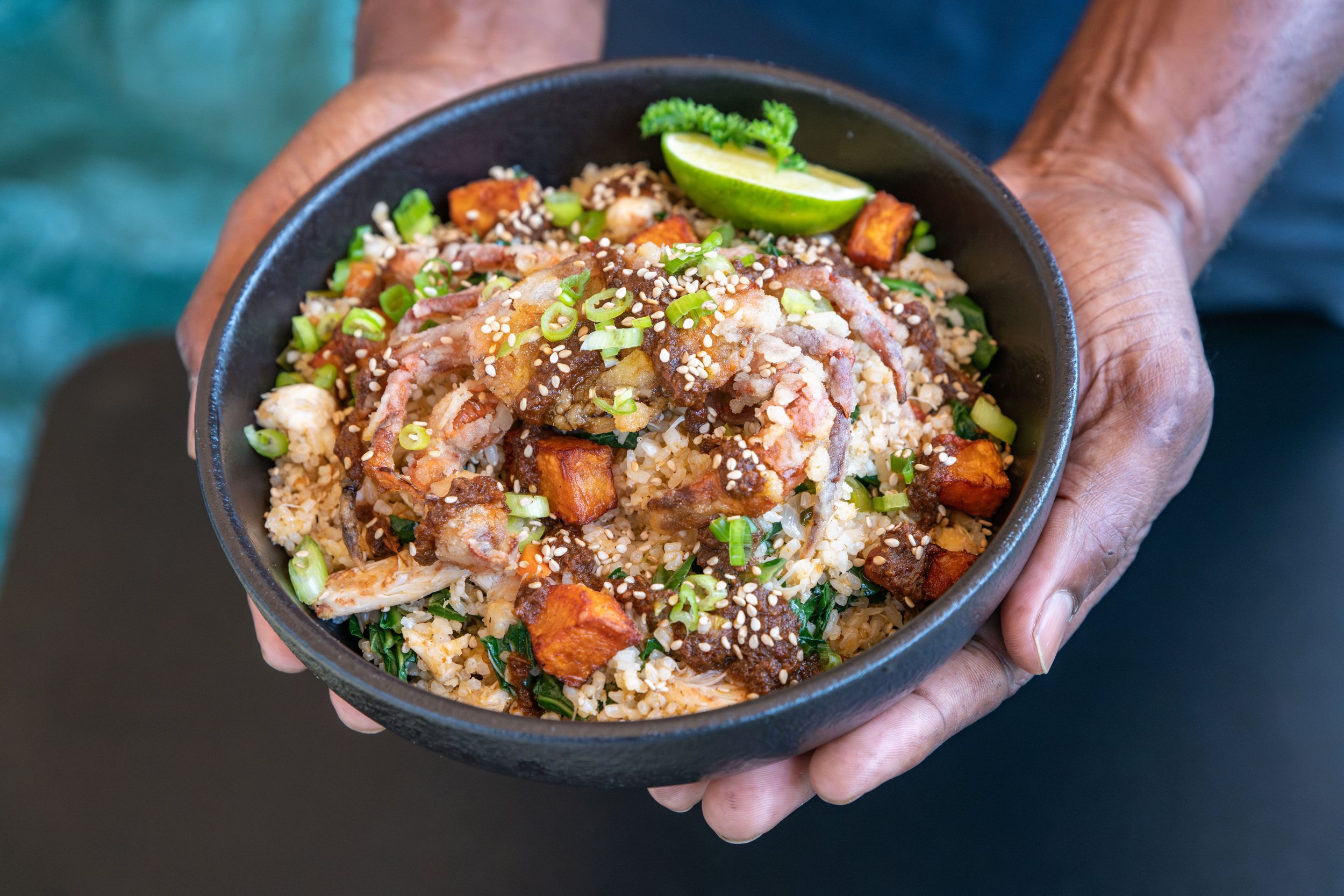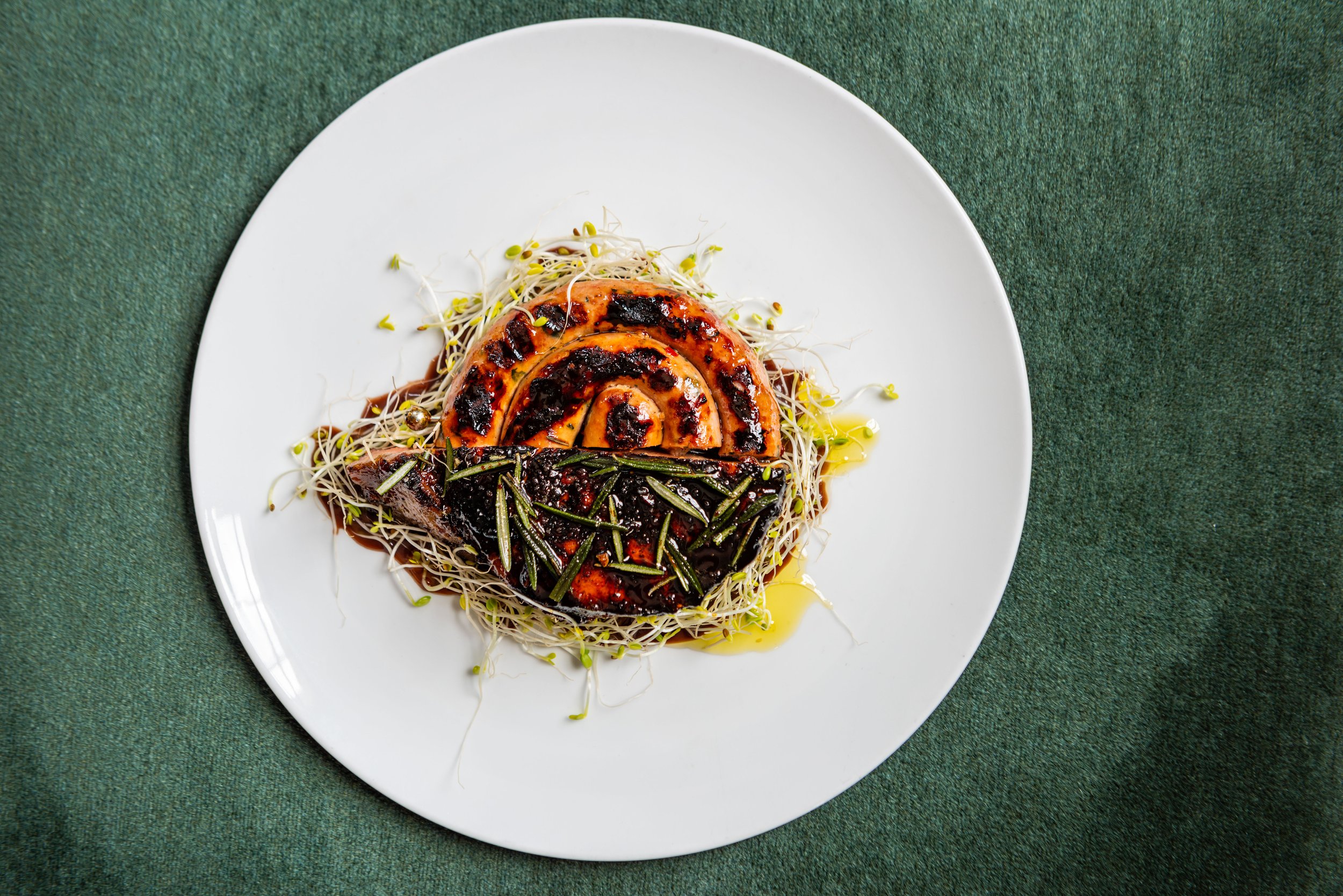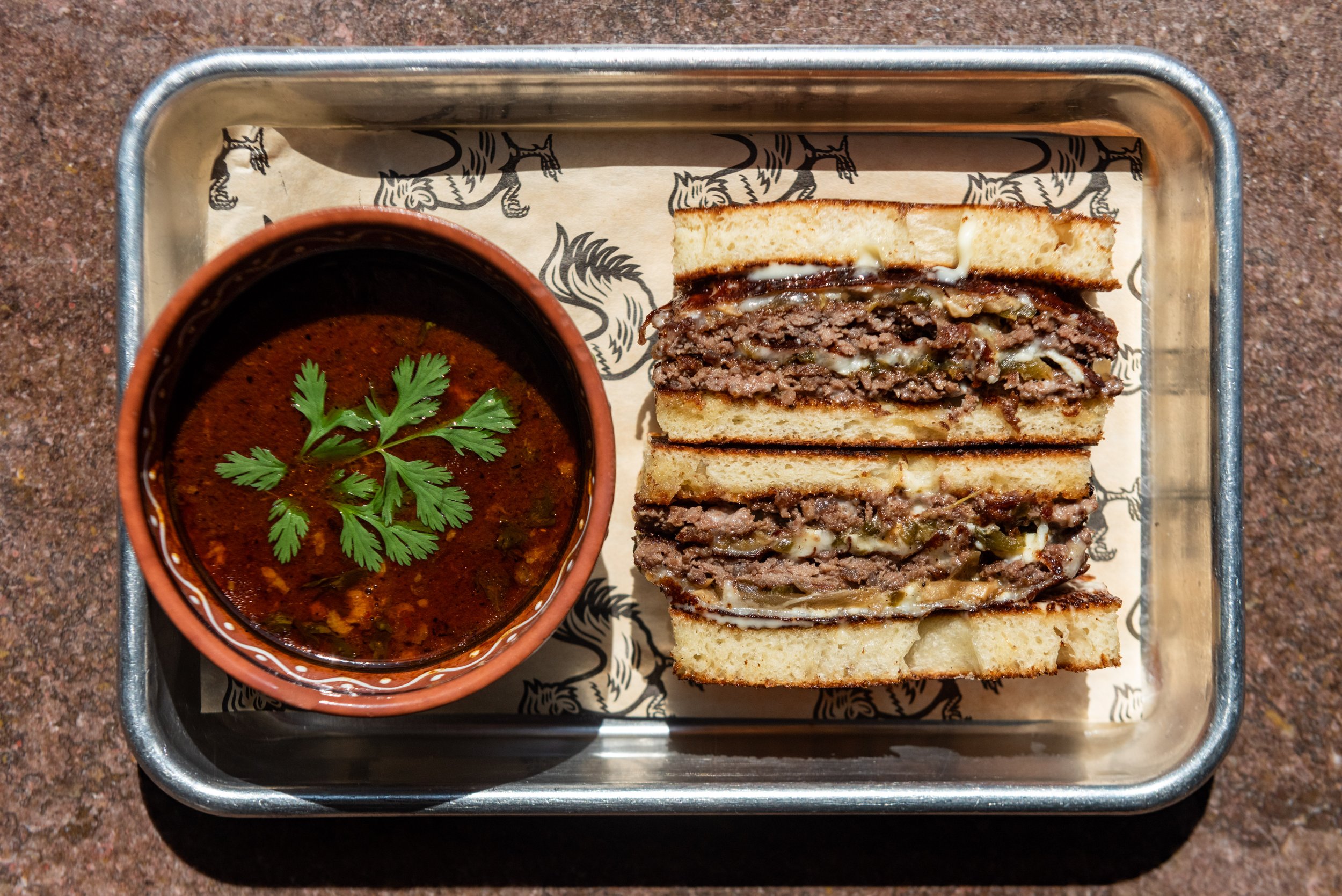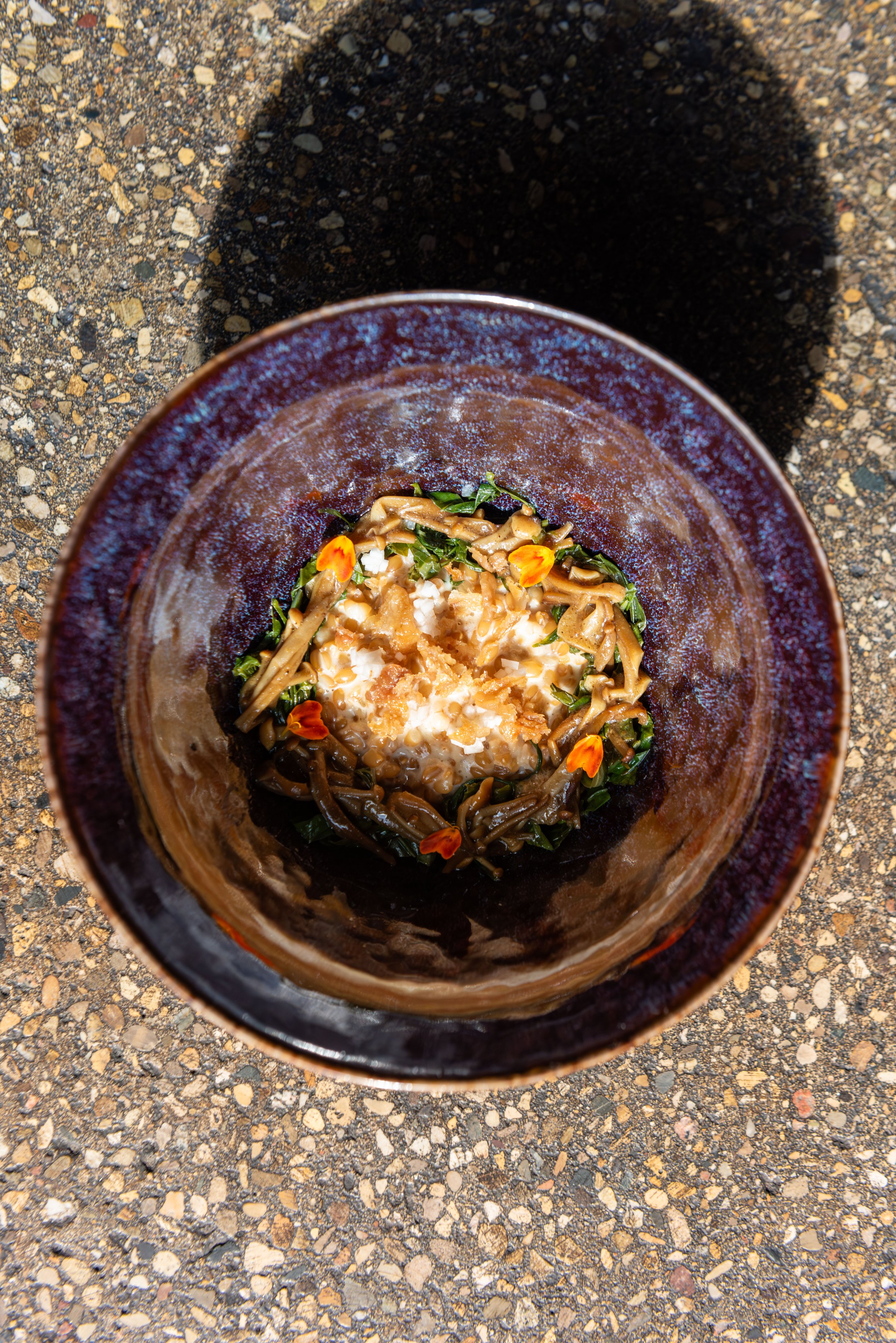The Way to Glass Noodles
Chef Victor Huang of Very Fresh Noodles provides a step-by-step guide to making slurpable glass noodles with a QQ texture that won't quit.
Chef Victor Huan of Very Fresh Noodles | Photos: Will blunt
Huddled in the narrow kitchen of Very Fresh Noodles’ Chelsea Market stall stand Chef Victor Huang and his small but mighty team, hands stretched wide as they pull on flour-based dough.
Huang gained recognition for these biang biang noodles—sometimes mixed with Szechuan-smothered braised lamb, sometimes dropped into a beef noodle soup, always served in a to-go bowl that reads “Send Noodz.” But Huang has mastered the technique for a noodle that contains no flour and no stretching at all: glass noodles. Most often, glass noodles are made out of a pre-molded block of mung bean starch that is grated thin or chopped thick. In order to make his glass noodles more similar to the biang biang style, Huang steams and slices the noodles flat and wide, so they’re light and slurpable with a QQ texture that won’t quit. Here’s how it’s done:
STEP ONE
Start your steamer. You can use any type of steamer. Bamboo steamer, steel steamer or even a makeshift wok steamer.
STEP TWO
Prepare the batter. Huang combines 200 grams of water and 800 grams of mung bean starch, but any 1:4 ratio will work. The batter should be thin and white like milk.
STEP THREE
Ladle. Scoop 12 ounces of the mung bean noodle batter out onto a greased round cake pan. Make sure to thinly and uniformly coat the entire surface area of the pan.
Mung Bean Noodles, Sesame Sauce, Dan Dan Soy Protein, Scallion, Fried Broad Beans, and Cucumber
interior of very fresh noodles
STEP FOUR
Steam. Gently transfer the cake pan over to your steamer. The pan should be able to stay flat and steady—if not, your noodles will come out uneven. Cover and steam for 1½ to 3 minutes.
STEP FIVE
Check. Take a peek at your mung bean pancake. It should now be clear like a pane of glass with a gelatin-like consistency. If it’s not there, just give it some more time.
STEP 6
Cool. Grab the cake pan and plunge it into an ice bath, cooling the mung bean pancake completely. Or you could stick it in your refrigerator or freezer instead, but be careful not to dry out or freeze it up.
STEP SEVEN
Release. Using a dough scraper or your hands, very gently release the mung bean pancake from the cooled-down cake pan and lay it out onto a cutting board.
STEP EIGHT
Fold and slice. Fold the pancake in thirds and slice heightwise to make about 2-inch-wide noodles or to the width of your choosing. But no matter how you slice it, you will end up with a pile of jiggly, hand-cut glass noodles.
STEP NINE
Top It. At Very Fresh Noodles, Huang tosses the noodles with chile oil, sesame sauce, cucumbers, scallions, toasted sesame seeds, suimiyacai, fermented black beans, wood ear mushrooms, and seitan.
That’s right, for all those who care, these noodles are gluten-free and vegan (full recipe here).




